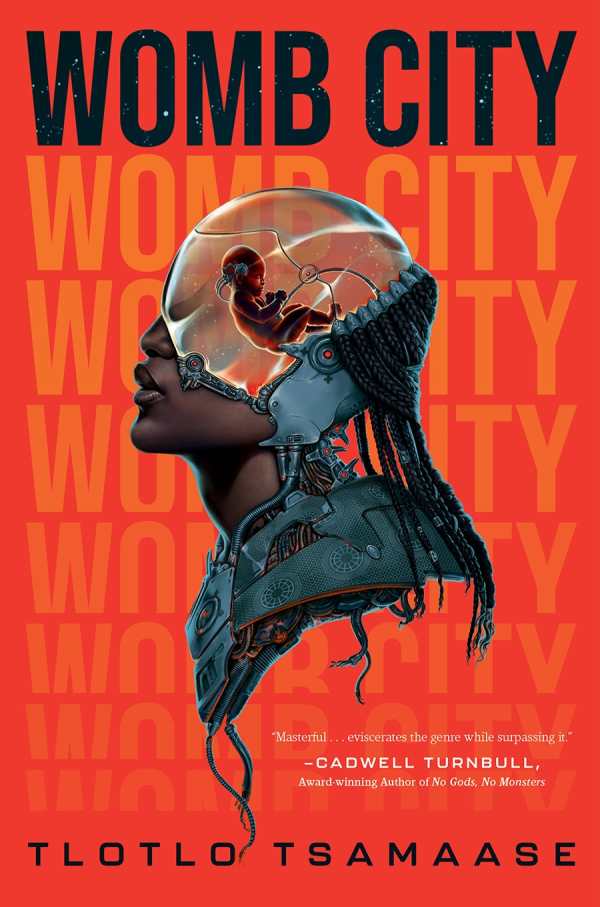Womb City
In Tlotlo Tsamaase’s fearsome futuristic novel Womb City, a woman struggles to escape the dystopian horror of her AI-controlled existence.
Twenty-eight-year-old Nelah lives in Botswana with her police officer husband, Elifasi. Technological advancements allowed the government to repurpose various human bodies; these “shells” are used to house the consciousnesses of other wait-listed souls. The bodies of criminals must be monitored with microchips to ensure that errant behaviors aren’t repeated.
Though Nelah is a successful architect, she inhabits the body of a former criminal. Because of her potential for deviance, Nelah’s husband has access to her mental and physical capacities; he performs a daily microchip assessment, inserting the probe with detachment, like he “uses his penis.” Elifasi also has the further secret ability to activate Nelah’s sexual desire with a remote control device.
Nelah’s existence is commandeered by her microchip, but she still experiences intense emotions. She longs to have a child. Following a series of miscarriages, she and Elifasi consult a fertility clinic. As their daughter’s “curated” embryo begins to grow in a clinic “Wombcubator,” Nelah lovingly monitors the baby’s progress with her smartphone.
In this surreal, stratified world, scientific and governmental overreach intersect with human corruption. Women of color like Nelah are the primary targets of exploitation, while “body-hops” into white identities are the most desirable. In countries like Nigeria and Uganda, LGBTQIA+ individuals are also microchipped; if same-sex activity is detected, their bodies will be imprisoned and cremated.
As the book’s narrator, Nelah’s voice is captivating and valiant. Caught up in a forbidden extramarital affair, she manages to briefly elude her technological enslavement and later enters a murderous spiral of violent liberation.
With both chilling precision and anguished passion, Womb City depicts a toxic future of cyber-reincarnation and authoritarian omniscience.
Reviewed by
Meg Nola
Disclosure: This article is not an endorsement, but a review. The publisher of this book provided free copies of the book to have their book reviewed by a professional reviewer. No fee was paid by the publisher for this review. Foreword Reviews only recommends books that we love. Foreword Magazine, Inc. is disclosing this in accordance with the Federal Trade Commission’s 16 CFR, Part 255.

